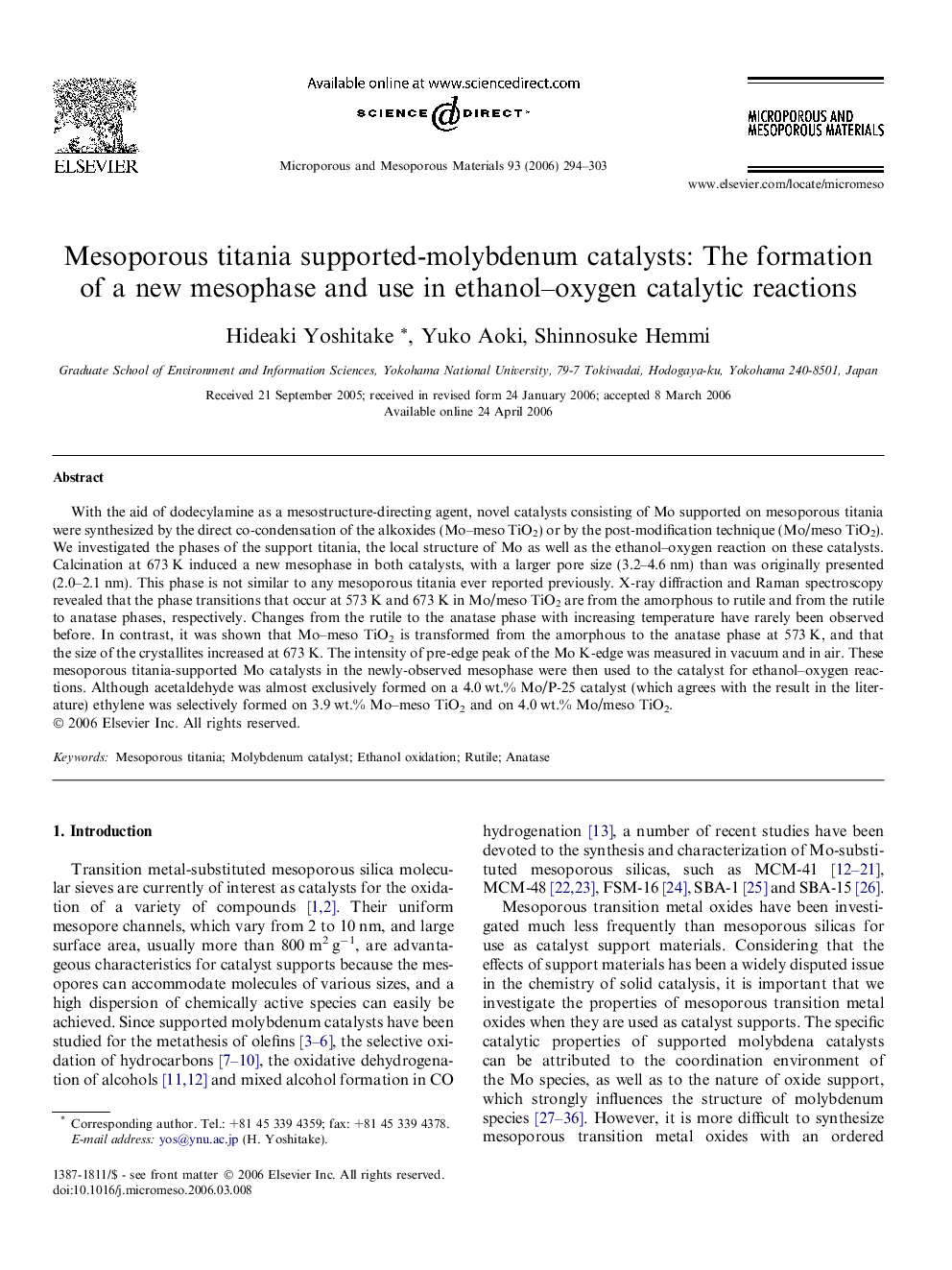| Article ID | Journal | Published Year | Pages | File Type |
|---|---|---|---|---|
| 76881 | Microporous and Mesoporous Materials | 2006 | 10 Pages |
With the aid of dodecylamine as a mesostructure-directing agent, novel catalysts consisting of Mo supported on mesoporous titania were synthesized by the direct co-condensation of the alkoxides (Mo–meso TiO2) or by the post-modification technique (Mo/meso TiO2). We investigated the phases of the support titania, the local structure of Mo as well as the ethanol–oxygen reaction on these catalysts. Calcination at 673 K induced a new mesophase in both catalysts, with a larger pore size (3.2–4.6 nm) than was originally presented (2.0–2.1 nm). This phase is not similar to any mesoporous titania ever reported previously. X-ray diffraction and Raman spectroscopy revealed that the phase transitions that occur at 573 K and 673 K in Mo/meso TiO2 are from the amorphous to rutile and from the rutile to anatase phases, respectively. Changes from the rutile to the anatase phase with increasing temperature have rarely been observed before. In contrast, it was shown that Mo–meso TiO2 is transformed from the amorphous to the anatase phase at 573 K, and that the size of the crystallites increased at 673 K. The intensity of pre-edge peak of the Mo K-edge was measured in vacuum and in air. These mesoporous titania-supported Mo catalysts in the newly-observed mesophase were then used to the catalyst for ethanol–oxygen reactions. Although acetaldehyde was almost exclusively formed on a 4.0 wt.% Mo/P-25 catalyst (which agrees with the result in the literature) ethylene was selectively formed on 3.9 wt.% Mo–meso TiO2 and on 4.0 wt.% Mo/meso TiO2.
